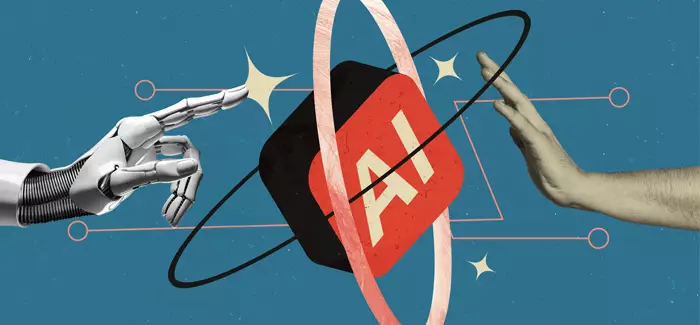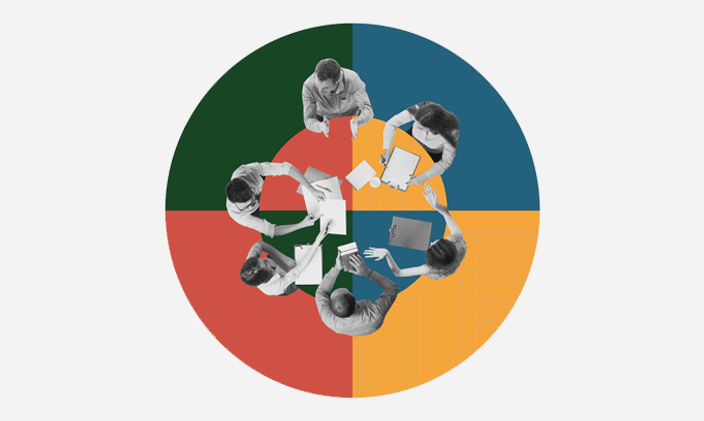The benefits of artificial intelligence

Written by Lorie A. Parch

Reviewed by Kathryn Uhles, MIS, MSP, Dean, College of Business and IT

As seen in Alumni Chronicles Magazine.
AI isn’t going anywhere. And while the drawbacks and the benefits of artificial intelligence are increasingly well documented, it’s worth exploring some of the potential downstream effects — as well as how you can prepare for this brave new future.
The backstory on the benefits of artificial intelligence
To paraphrase the title of a recent Oscar-winning film, artificial intelligence is everything, everywhere, all at once. Whether you see the benefits of artificial intelligence as encompassing the most profound technological change in generations, or you fear the rise of the robots, AI is permeating almost every part of our lives. By 2032, generative AI alone is expected to be a $1.3 trillion market, according to Bloomberg Intelligence.
While generative AI and its fellow models — machine learning, deep learning and neural networks, among others — will only continue to evolve, there’s one thing that makes them all very human-like: They’re definitely not perfect. Take, for example, the international parcel delivery service that disabled its online support chatbot after it swore at customers and “wrote” a poem criticizing the company. Or the AI tool a famous fast-food chain was testing to take drive-thru orders at some restaurants. In one case, the bot kept adding chicken nuggets to a customer’s order — eventually reaching 260. (The company ended the tests in June 2024.)
Then there are the epic fails that aren’t so funny. Algorithms that reveal inherent discrimination and bias. AI “hallucinations,” in which the information generated appears to be accurate but isn’t. Deepfake videos and photos fabricated with the help of AI to deceive, manipulate and defraud to the tune of billions of dollars a year.
And we’ve all heard about what AI might do to the job market. A 2023 analysis by the Pew Research Center found that about one-fifth of U.S. workers were “exposed” to AI, meaning the most important activities they do on the job may be replaced or assisted by AI. Those at highest risk? Women, Asian workers, and college-educated and higher-paid workers.
A 2023 report by consulting firm McKinsey Global Institute found much the same, with generative AI having a greater impact on educators, professionals, creatives like writers and designers, and those with more education. More recently, the CEO of Anthropic predicted up to 50% of entry-level jobs were at risk of elimination.
The future of work
Before you panic, keep in mind that these findings include careers in which AI can help employees do their work faster and better. The McKinsey report projects that generative AI and related technologies could “automate work activities that absorb 60 to 70% of employees’ time today.” Change is likely coming sooner than you might think: The report estimated that between 2030 and 2060 “half of today’s work activities could be automated.” Many see a productivity boom in the labor market on the horizon, even if it’s not imminent.
While AI technologies should absolve us of some of the drudgery of work — think automating the writing of evaluations and reports or creating a PowerPoint presentation — we’ll all need to prepare for a new workplace. That doesn’t necessarily mean becoming a robotics engineer or data scientist though.
“There are durable skills students need, even without AI, to be successful in the workplace: the ability to think critically, to problem-solve, to access information and to work in teams,” explains Alisa Fleming, PhD.
As the director of Institutional Assessment for University of Phoenix, Fleming tracks University-level durable skills attainment across student and alumni populations. “When you add AI into the picture, these durable skills become more important because you use them when working with AI.”
Mary Elizabeth Smith, the director of Learning Innovation and Strategy at UOPX, explains, “As the University examined emerging research to define the skills students need to effectively leverage generative AI, we found that these were primarily durable skills. So, it is actually durable skills that form the foundation of our new course, CSS/201 Generative AI in Everyday Life.”
The class inculcates durable skills like creativity, ethical reasoning and adaptability to more effectively use generative AI, Smith says. “Creativity drives innovation, enabling individuals to push boundaries and optimize AI tools as routine tasks become automated,” she explains. “Ethical reasoning ensures responsible use of AI, preventing biased or unintended outcomes while aligning decisions with societal and organizational values. Adaptability and lifelong learning are key for keeping pace with rapid advancements in AI, empowering individuals to stay current with new tools and techniques. By focusing on these skills, the course equips students to harness the power of generative AI responsibly and effectively in their personal and professional lives.”
Smith adds that developing these skills within the framework of a for-credit, undergraduate elective course speaks to working adults who want to learn how to leverage the benefits of AI but who also appreciate the safety net provided by a college-level class. They can optimize their experience with an emerging technology through an instructor-led environment.
“While we’ll offer other pathways for learning, this course provides a structured, supportive space to learn foundational skills,” Smith says.
Additionally, skills-aligned courses like Generative AI in Everyday Life are likely to become increasingly necessary for students who also wish to stay competitive in rapidly changing workplaces. If AI can boost productivity, after all, learning to leverage it effectively can play a role in career development.
“You need digital fluency, some level of technical skill to retrieve that information,” Fleming says. “It requires critical thinking to write a prompt and to evaluate what it delivers. Is the information accurate? Is it free from bias? Does it provide me with sources?”
Important, too, is confirming that no confidential or personally sensitive information is at risk and that any content that’s generated doesn’t violate copyright laws.
Generative AI on the job (and at school)
Communication, both oral and written, will always remain a core competency for any workplace. But not everyone is a gifted writer or speaker. Generative AI has tremendous potential for quickly drafting professional communication of all kinds, as well as texts, social media posts and even greeting cards.
UOPX is also looking at ways to use AI to better understand the unique needs of learners as they move through their courses — while keeping critical human interaction in place.
Smith adds that, for adult learners, a powerful feature of generative AI is its ability to act as a personal tutor on any subject, including creating a customized learning plan. While this is still experimental (UOPX doesn’t offer AI tutors, per se), it does open the door to exciting possibilities for individuals who are familiar with and willing to explore how AI can help them learn.
“Let’s say you want to get better at writing clear and professional emails,” Smith says. “You might enter the following prompt: I often struggle to write professional emails that are clear and to the point. Can you help me create a four-week plan to improve? I have 20 minutes each day to practice.”
Such a prompt provides enough context for generative AI to create a tailored plan for you, Smith says.
“AI can also simulate real-world situations, like helping you craft an email to request feedback or communicate a deadline,” she adds. “Along the way, it can provide feedback on tone, word choice and structure, and even suggest specific improvements.”
Fleming acknowledges the fears and skepticism surrounding AI, and wonders if a lack of understanding about artificial intelligence is partly to blame. “It’s constantly evolving and there’s so much to know, it can be overwhelming,” she says. “But people are always going to be needed; that’s the key. AI should assist and complement what we do. We’re still going to need people who are creative, who can think critically and who can problem-solve.”
To Smith’s mind, the future of generative AI is exciting, with endless possibilities for creativity, personalization and transformation. “It will be like teaching a computer to create almost anything for you — whether it’s writing, designing images or even composing music — and it’s going to reshape how we work and interact,” she says.
You bring the durable skills like creativity and adaptability, in other words, and AI will bring a potentially broader, more colorful, more personalized world.
How to learn more about leveraging the benefits of AI
If you’re curious about how to optimize the benefits of AI, you’re not alone. One way to learn more may be through University of Phoenix’s undergraduate course, Generative AI in Everyday Life, which offers both foundational knowledge and hands-on experience with AI tools.
ChatGPT is a trademark of OpenAI OPCO, LLC.

ABOUT THE AUTHOR
Lorie A. Parch is a long-time journalist, editor and content strategist based in Chandler, Arizona. She primarily covers higher education, technology, public safety and lifestyle topics, and for four years led digital content strategy at the California State University Office of the Chancellor. A former Knight Journalism Fellow at the CDC and a National Magazine Award-nominated writer, Lorie's work now focuses on strategic communications and marketing. When she's not buried in a book, she loves traveling, painting and ceramics.

ABOUT THE REVIEWER
Currently Dean of the College of Business and Information Technology, Kathryn Uhles has served University of Phoenix in a variety of roles since 2006. Prior to joining University of Phoenix, Kathryn taught fifth grade to underprivileged youth in Phoenix.
This article has been vetted by University of Phoenix's editorial advisory committee.
Read more about our editorial process.


